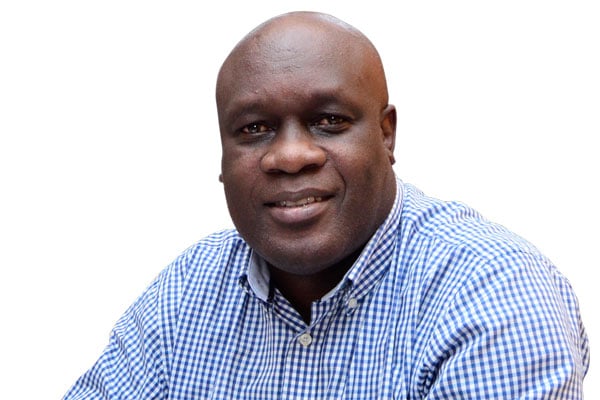Should photo of police raid on bar have been published?

Author: Odoobo C. Bichachi is the Nation Media Group (NMG)-Uganda public editor. PHOTO/FILE.
What you need to know:
- I asked editors to liaise with the reporter and clarify the circumstances so I could return to the complainant with a firm position.
This week, I received a complaint about a photo published on Daily Monitor online alongside a story, “22 arrested from toilet as police raid Mbale bar” (March 3, 2021).
The photo was captioned: “The revellers, some of whom were found hiding in a toilet, are accused of flouting government directives announced last March to control the spread of Covid-19, which has so far infected 40,357 Ugandans with 334 deaths confirmed by Ministry of Health.”
Police had, apparently, raided a hotel/bar in the early hours of the night “to enforce Covid-19 regulations.” The complainant said the photo and caption were injurious to his/her character that portrayed him as a criminal yet he was merely a traveller caught up in a melee at a place he/she had stopped for the night before proceeding with his journey the next day. They requested it be pulled down. Story did not name anyone.
I asked editors to liaise with the reporter and clarify the circumstances so I could return to the complainant with a firm position. They did not respond. Yes, many journalists, like many soldiers, tend to be less bothered about the impact of their guns (read pens/stories) on real people and real lives because power blinds.
Anyhow, I called the reporter who insisted it was a bar that was raided, not a hotel.
My attention was, however, less on whether the raid took place or not, whether the story was right or false, whether it was a bar with a lodging or a lodge with a bar.
Rather, it was on the old ethical question of whether journalists should always seek to expose the truth or to minimise harm. It is an old debate! I picked up the NMG Editorial Policy Guidelines to refresh my mind on this issue. This is what it states on “Use of pictures and names:”
“As a general rule, the media should apply caution in the use of pictures and names and avoid publication or distribution where there is a possibility of harming the person(s) concerned unless there is a substantial public interest served by such use. There should be no identification of a person or persons in a photograph unless their identity is absolutely certain.”
I also looked at the Code of Ethics by Jordan’s ombudsman, the Jordanian Media Credibility Monitor (JMCM) specifically on “Guidelines for Publishing Photos of Criminals/Victims in Media Outlets.” It says:
“The fundamental rule in deciding whether to publish a photo or not is assessing the impact of publishing on the right of the public to know and the benefit that publishing or not publishing a photo may achieve.”
Well, the photo published was factual; about an incident that happened, and which the complainant does not deny except with regard to the nitty-gritties – hotel room or bar toilet! So the people in the photo were, technically speaking, suspects in a case of breaking Covid-19 regulations.
However, best journalism practice discourages identifying of suspects before they are charged. In some countries, this is codified while in others, it is at the discretion of editors. That latter is the case in Uganda. This is mainly for two reasons; to minimise harm to suspects who are presumed innocent until charged and convicted, and to insulate media against possible defamation suits.
In brief, a UK organisation “Helping with life’s legal issues,” puts it well in its note headlined “The risk of media identification of crime suspects: Inference of guilt for identified crime suspects.” It reads: “If the police or another agency is investigating someone or has placed them under arrest, this makes them a crime suspect. Media organisations must be careful of publishing the identity of a suspect at this stage – via print, online, TV or radio – because if the police investigation does not lead to a prosecution, the suspect may be able to sue the organisation for libel.”
So did the photo add any value to a story on police raid in which the suspects (rightly and graciously) were not named? Should Daily Monitor online insist on leaving the photo on its site as proof of the raid (fact) and care less about minimising harm?
Shall we see a follow up story on whether the suspects were charged and convicted or freed? Or should we simply move to the next story; the complainant is collateral damage!
Send your feedback/complaints to
[email protected] or
call/text on +256 776 500725.




